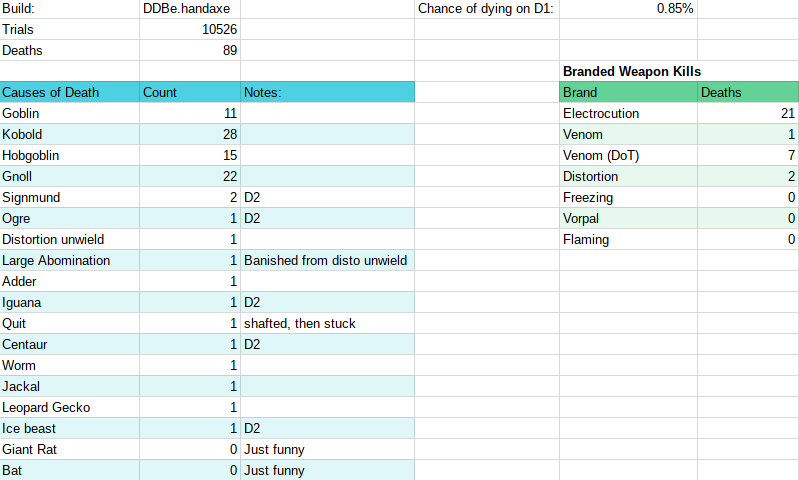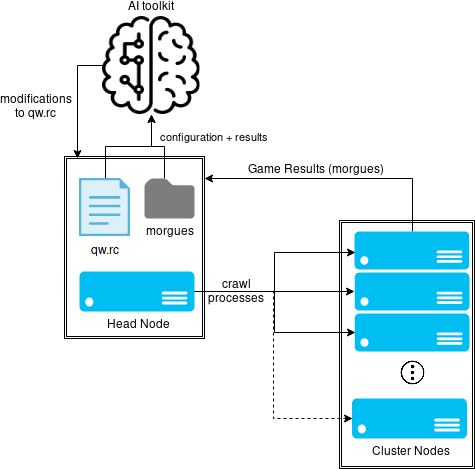Final Paper – crawl-o-matic-o-matic
Poster – ebramth15_poster
Gitlab with code – https://gitlab.cluster.earlham.edu/duckroller/crawl-o-matic-o-matic
Final Paper – crawl-o-matic-o-matic
Poster – ebramth15_poster
Gitlab with code – https://gitlab.cluster.earlham.edu/duckroller/crawl-o-matic-o-matic
For my project, optimizing an AI agent for Dungeon Crawl Stone Soup, I’ve recently changed the scope of my project somewhat. Instead of trying to improve the AI agent’s chance of winning a game of DCSS, I’m now working to optimize its chance of success at delving past the first floor of the dungeon.
This different scope has several benefits:
Some example results of preliminary trials are as follows:

Some bug fixing and tweaking of the algorithm is necessary to avoid accidental “shafting” to lower floors of the dungeon. Additionally, with the high rate of success you see above, it may be necessary to choose a weaker starting character to make room for significant improvements.
For my senior project, I’m working on optimizing the performance of qw, an AI Agent developed to play (and sometimes win) the game of Dungeon Crawl Stone Soup.
To reduce the search space and make optimization with machine learning faster, easier, and more efficient, I’m limiting the bot to only explore the first floor of the Dungeon. This takes significantly faster to complete compared to running through a full game, and the AI agent will be faced with a much smaller set of monsters, items and dungeon features.
Currently, the plan is to adjust minor variables in the coding of qw to see if it can survive the first floor of the dungeon with a higher rate of success.
Following is my experimental design.
